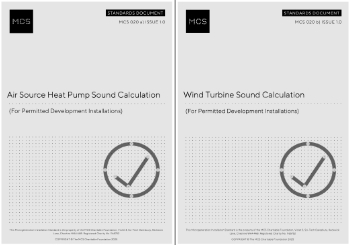Noise level
Noise can be defined as undesired sound, or sound which causes disturbance or annoyance to the recipient. One scientific measure of noise levels is the decibel (dB), which is calculated according to a logarithmic intensity scale.
Noise levels between 120 dB and 150 dB (e.g., airplanes taking off and landing, drilling and sawing of roadways) are dangerous to human hearing. 'Pleasant' noise levels are between 30 dB and 50 dB, though these levels are sometimes unachievable in today's society.
The Government has defined three noise levels:
- No observed effect level – the level of noise exposure where there is no effect on health or the quality of life.
- Lowest observed effect level – adverse effects on health and the quality of life can be detected.
- Significant observed adverse effect level – the level of noise exposure where there can be significant effects on health and quality of life.
In Great Britain, over one million employees are exposed to noise levels at their workplace which pose a risk to their hearing.
In April 2006, the Control of Noise at Work Regulations 2005 came into force, replacing the Noise at Work Regulations 1989. The regulations were established under the Health and Safety at Work etc. Act 1974 and implemented the European Council directive 2003/10/EC. The regulations require that employers protect their employees from noise levels that could cause hearing damage.
[edit] Related articles on Designing Buildings
Featured articles and news
Heat pump and wind turbine sound calculations for PDRs
MCS publish updated sound calculation standards for permitted development installations.
Homes England creates largest housing-led site in the North
Successful, 34 hectare land acquisition with the residential allocation now completed.
Scottish apprenticeship training proposals
General support although better accountability and transparency is sought.
The history of building regulations
A story of belated action in response to crisis.
Moisture, fire safety and emerging trends in living walls
How wet is your wall?
Current policy explained and newly published consultation by the UK and Welsh Governments.
British architecture 1919–39. Book review.
Conservation of listed prefabs in Moseley.
Energy industry calls for urgent reform.
Heritage staff wellbeing at work survey.
A five minute introduction.
50th Golden anniversary ECA Edmundson apprentice award
Showcasing the very best electrotechnical and engineering services for half a century.
Welsh government consults on HRBs and reg changes
Seeking feedback on a new regulatory regime and a broad range of issues.
CIOB Client Guide (2nd edition) March 2025
Free download covering statutory dutyholder roles under the Building Safety Act and much more.
Minister quizzed, as responsibility transfers to MHCLG and BSR publishes new building control guidance.
UK environmental regulations reform 2025
Amid wider new approaches to ensure regulators and regulation support growth.
BSRIA Statutory Compliance Inspection Checklist
BG80/2025 now significantly updated to include requirements related to important changes in legislation.























